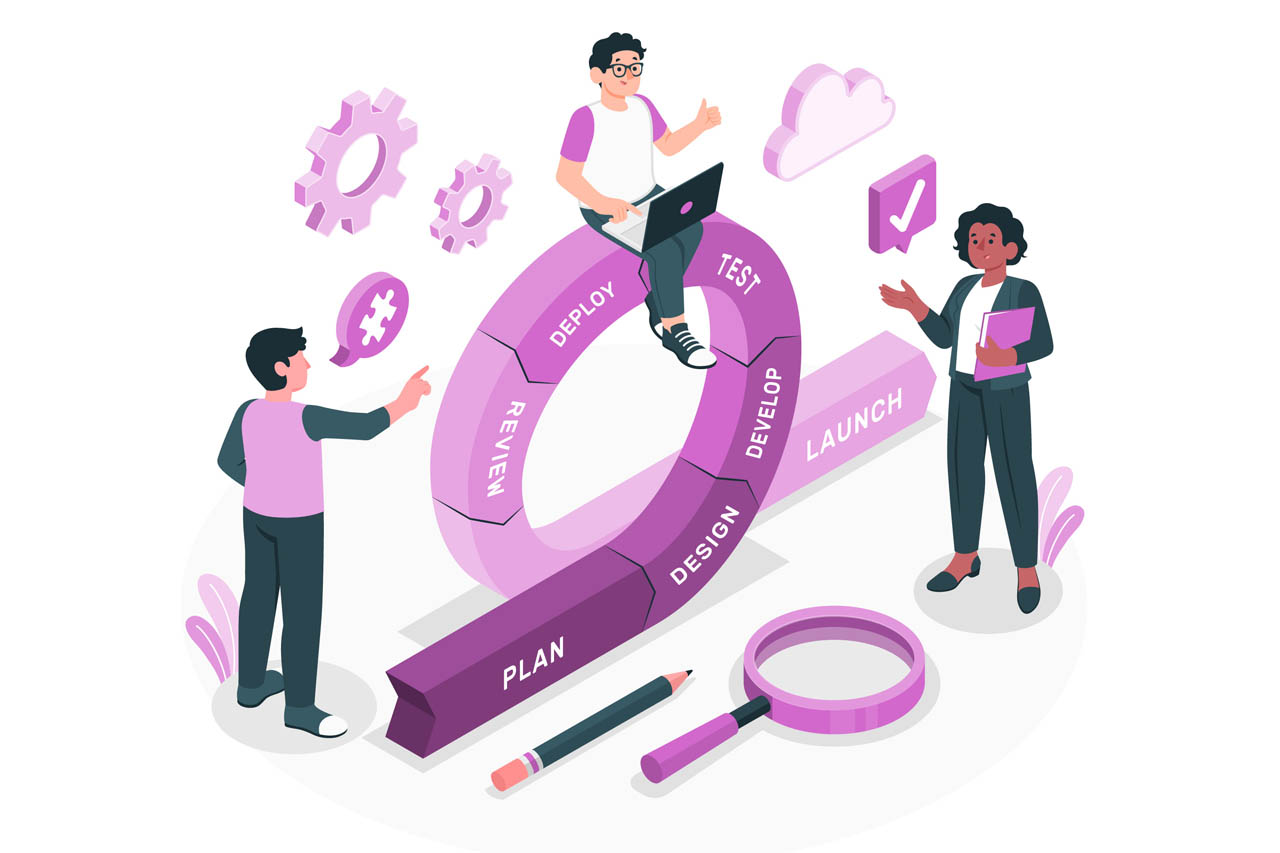The Software Development Life Cycle (SDLC) is a structured process used by software development teams to design, develop, test, and deploy software applications. It provides a systematic approach to software development, ensuring that high-quality software is delivered on time and within budget.
The typical phases of the SDLC are:
- Planning:
- Objective: Define the scope and purpose of the software project.
- Activities:
- Identify stakeholders and gather requirements.
- Define project goals, deliverables, and timelines.
- Conduct feasibility studies and risk assessments.
- Develop a project plan and resource allocation strategy.
- Requirements Analysis:
- Objective: Gather and analyze business and technical requirements.
- Activities:
- Conduct meetings with stakeholders.
- Create detailed requirement specifications.
- Prioritize requirements based on project goals and stakeholder input.
- Develop use cases and user stories.
- Design:
- Objective: Create a blueprint for the software solution.
- Activities:
- Design the software architecture and system components.
- Develop data models and database schemas.
- Create user interface (UI) designs and prototypes.
- Specify technical requirements and system interfaces.
- Implementation (Coding):
- Objective: Develop the software according to the design specifications.
- Activities:
- Write code for the software components and modules.
- Implement user interfaces, business logic, and data access layers.
- Integrate third-party services and APIs.
- Conduct code reviews
- Testing:
- Objective: Ensure the software is free of defects and meets the specified requirements.
- Activities:
- Develop test plans and test cases.
- Conduct unit testing, integration testing, system testing, and acceptance testing.
- Identify and fix bugs and issues.
- Perform regression testing to ensure new changes don’t break existing functionality.
- Deployment:
- Objective: Deploy the software to the production environment.
- Activities:
- Prepare deployment plans and scripts.
- Set up the production environment (servers, databases, etc.).
- Perform deployment and configuration.
- Conduct final testing in the production environment (smoke testing).
- Train users and provide documentation.
- Maintenance:
- Objective: Provide ongoing support and enhancements to the software.
- Activities:
- Monitor the software for issues and performance.
- Provide technical support and bug fixes.
- Implement updates and patches.
- Enhance the software with new features based on user feedback.
- Evaluation and Feedback:
- Objective: Assess the project’s success and gather feedback for future improvements.
- Activities:
- Conduct post-deployment reviews and retrospectives.
- Gather feedback from stakeholders and end-users.
- Analyze project metrics and performance.
- Document lessons learned and best practices.
Software Development Life Cycle (SDLC)
